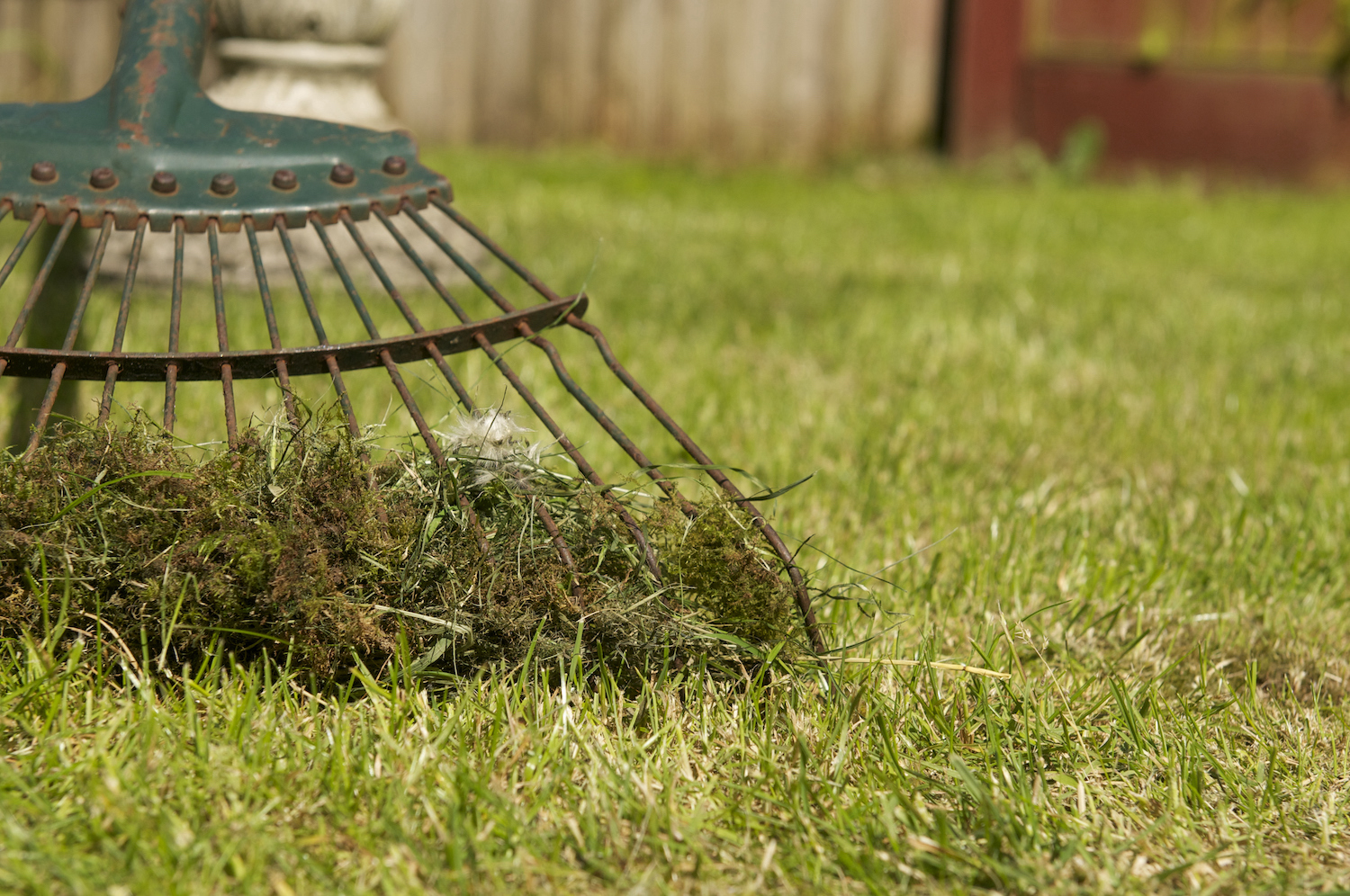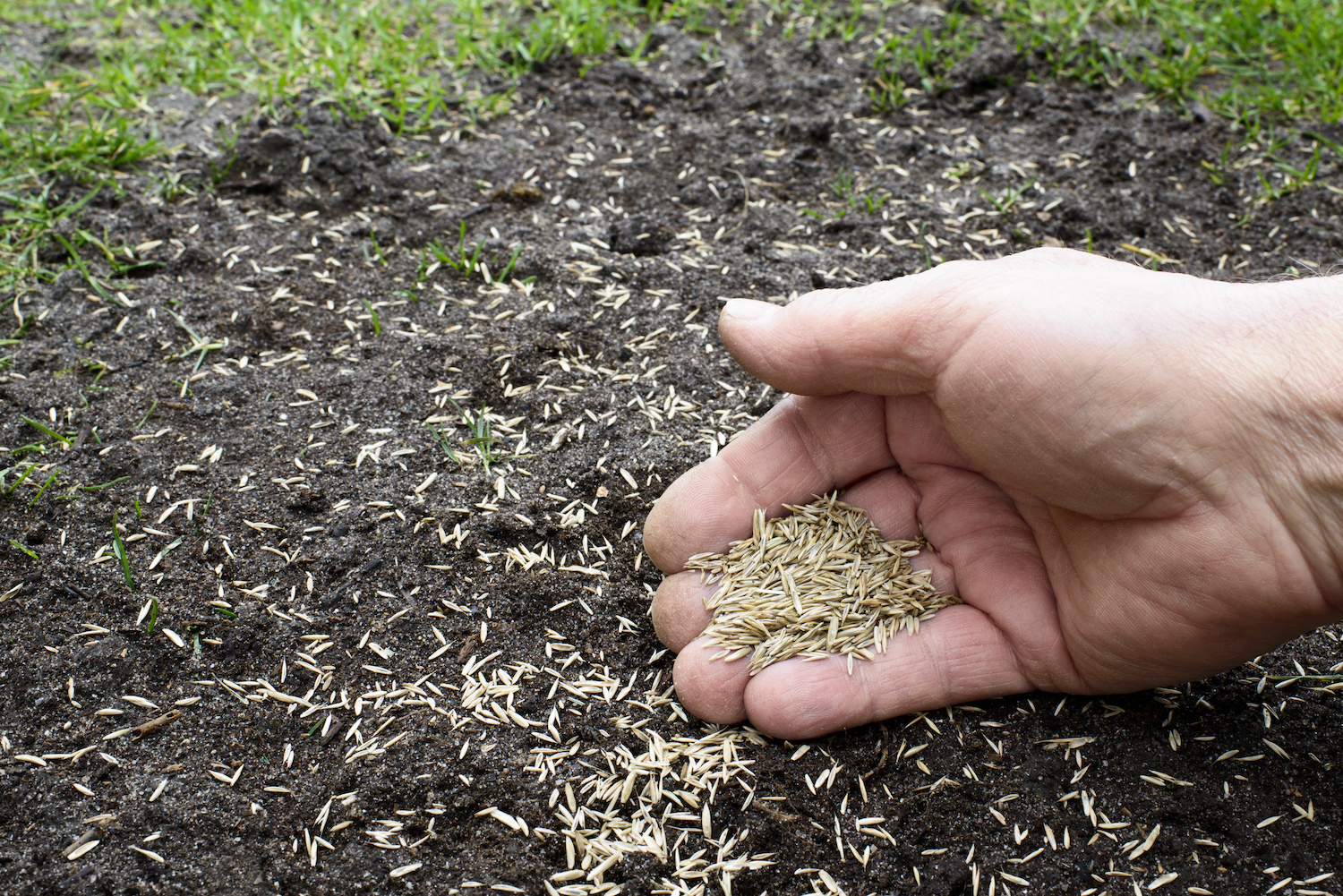
Frost, snow, ice and rain may have taken their toll on your lawn. If that's the case we have some tips for reviving your lawn after winter.
Specific advice will depend on where you live and the weather conditions your grass has been exposed to. However, there are some general guidelines to follow that will improve the quality of your lawn when spring rolls around again, and make your backyard look better.
From raking and reseeding to fertilizing, here's what to do for a healthy lawn and when to do it, according to gardening experts.
1. Avoid walking on your lawn if it's wet

If you've had a lot of rain or snowfall, it's best to let it soak away and for the ground to dry out before treading on your turf. Charlie Nardozzi, author of Month-by-Month Gardening, New England, explains why.
'Avoid walking on the lawn during thaws because this will compact the surface, pushing needed oxygen from the soil and making it harder for the lawn grass roots to survive,' says Charlie. 'This will lead to poor grass growth. A good way to tell if your lawn is still too wet to work is if you leave footprints when you walk across it.'
2. Wash road salts away
Even if you used sand–which is less toxic than commercial salts or de-icers–on your own garden path or driveway, it's likely they were applied to public areas, such as roads and sidewalks and they can seep onto your lawn.
'Once the ground thaws, flush out any road salts that have accumulated along driveway or walkways by watering the area heavily with a hose,' says Charlie Nardozzi. 'These salts can kill lawn grass roots if left unchecked.'
3. Check which areas need reseeding
Once any snow has thawed, you may start to notice some bare patches of grass on your lawn. If you do, make a note and order any seed you will need for sowing in spring.
'Most home garden grass seeds are a mix of northern hardy grasses such as Kentucky bluegrass, perennial ryegrass, and fescue,' says Charloe Nardozzi. 'For sunny locations, choose a grass mix with more Kentucky bluegrass.' This $29 mix from Amazon is perfect.
'For shadier spots, choose one with more tall and creeping fescues. Whatever grass mix you select, check to see if it has any white clover in it. Clover used to be a regular ingredient in lawn grass seed because its roots fix atmospheric nitrogen that helps feed the grasses.
'Unfortunately, it got a reputation as a weed over the last fifty years and has been omitted from many lawn mixes. That attitude is changing, but many mixes still don’t contain clover. If your mix doesn’t have clover in it, consider buying it separately and mixing in 5 to 10 percent clover by weight.' Our advice for how to care for a clover lawn might persuade you here.
4. Rake your lawn and remove thatch

The hard work in the garden doesn't start until winter is truly out of the way and the weather has begun to get warmer. However, once the soil is dry, your lawn is ready for raking.
'It’s too early to sow lawn grass seed, but once the lawn dries out, usually toward the end of March and into April, start cleaning up your yard,' says Charlie Nardozzi
'Rake out the lawn, removing thatch that has built up from last year. Thatch is a dead grass layer that is prevalent in thick, lush lawns. If it’s more than ½-inch thick, this layer can stop the flow of water and air to grass roots. Using an iron or dethatching rake, remove the dead grass layer and compost it.
'Raking out dead grass or thatch stops the spread of snow mold disease, which thrives on dead grass and wet conditions. By raking the lawn early you can stop it from spreading and killing the grass.'
5. Deal with bare patches

Although reseeding a lawn is best done in the fall, small bare patches of grass can be reseeded in spring. This is usually around April in New England, or earlier if you're further south.
'Early March can be mild enough to encourage some green growth on the lawn, which reveals areas of dead grass,' says Kate Copsey, author of Month-by-Month Gardening New York & New Jersey.
'When the lawn is fully drained and free from snow, these areas to be repaired can be prepared and seeded. This can occur as early as mid-March or as late as April; let the ground and weather be your guide.
'Generally, spring is wet enough that a lawn doesn’t need added water, but if you reseeded an area, then those seeds need to be kept moist until they germinate,' adds Kate.
'Reseed bare areas with a grass variety similar to what is in your lawn,' says Charlie Nardozzi. 'Sow seeds by sprinkling them evenly by hand for small areas, or use a seed spreader for larger areas.
'Topdress the area with a layer of topsoil 1 to 2 inches thick. Cover with straw and keep well watered.' This $25 topsoil is ideal for lawns.
'For smaller lawns, consider laying sod instead of seeding. Try to find grass varieties similar to your existing lawn if you are using the sod to patch areas. Wait to fertilize lawns until they green up.'
6. Do a soil test
Fertilizing a lawn in spring may–or may not–be necessary. If you want to know whether to fertilize your lawn after winter, it's best to do a soil test, to see if its lacking any nutrients. This soil test kit is just $8 on Amazon.
Fertilizing your lawn is often beneficial. However, most gardening experts agree that over-fertilizing can damage your lawn, so don't just assume that fertilizing is necessary. Check first. This will also help to determine the type of fertilizer to use, if necessary.







